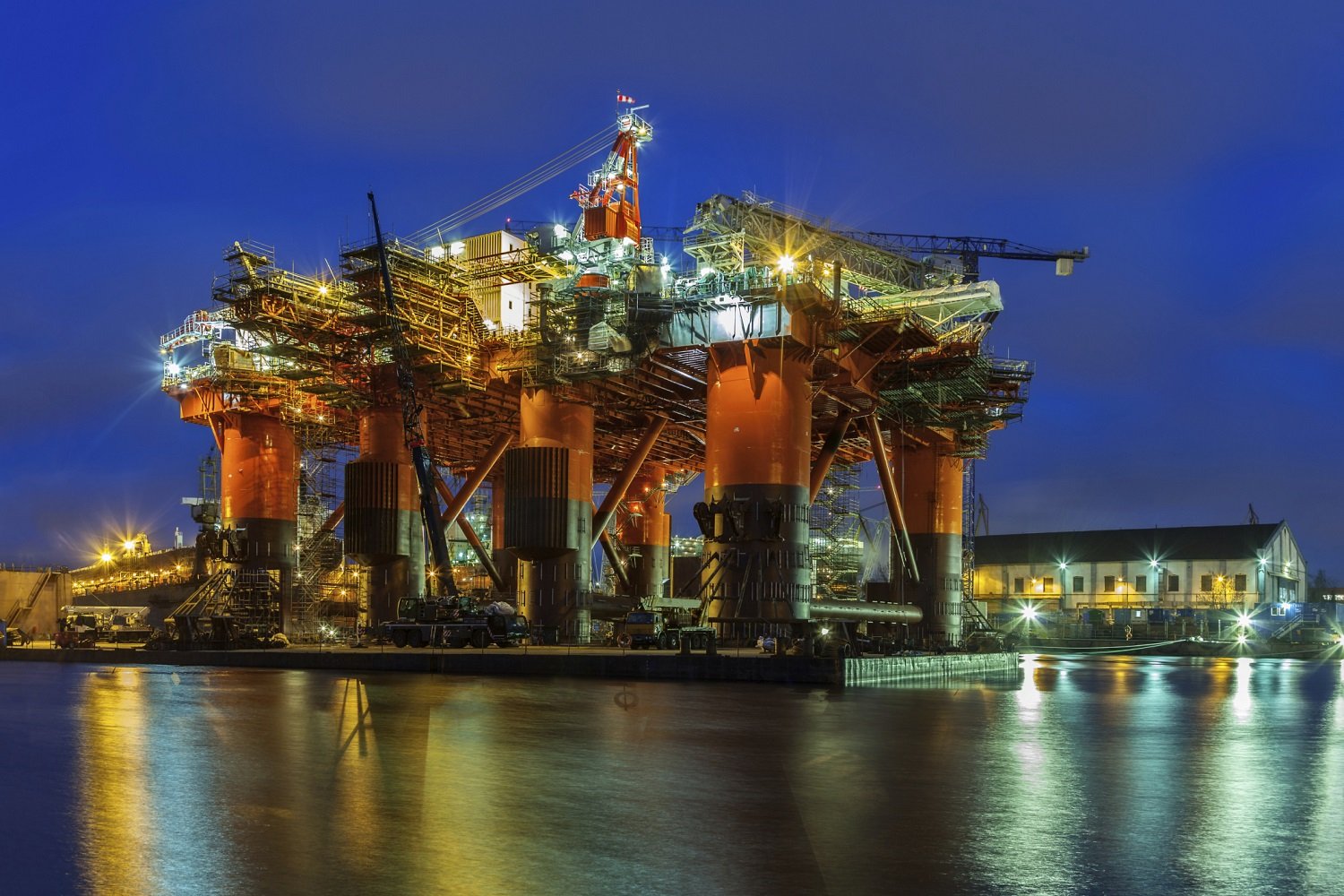Well, that was a shocker.
After much speculation over the past couple of months, offshore drilling expert Seadrill (SDRL +0.00%) announced, as part of its third-quarter financial results, that it was suspending its dividend and "focusing on debt reduction and value creating opportunities due to significant deterioration in the broader markets." In short, it sounds like management has realized that the offshore drilling market's current state of malaise, combined with falling oil prices and demand, could make for a big, big problem that the company isn't prepared to handle.
Let's take a look at some of the key parts of the earnings release -- after all, the dividend is just part of the story. We will talk more about the dividend, but let's take a look at the highlights first.
Earnings per share well short of expectations
Seadrill reported EPS of $0.31 for the quarter, less than half the $0.67 average estimate from analysts. For more context -- analyst projections can be all over the place -- the lowest estimate was $0.55, well above the end result. And while we Fools shouldn't get too caught up in the results of a single quarter, Seadrill coming up short is a reminder just how ugly the offshore drilling business has gotten over the past year.
Backlog holding steady
Even as the offshore drilling market has deteriorated, and faces growing uncertainty as oil prices remain stagnant, Seadrill's backlog of contracted work has remained strong. This quarter, Seadrill maintained a backlog of $20 billion, which is undoubtedly a positive in the current environment.
Included in the announcement were a handful of new contracts, totaling more than $2.3 billion in future revenues. Seadrill management has repeatedly claimed that its expertise goes beyond just having the most modern fleet of any offshore driller, and that this was a competitive strength that would help it maintain contracts for its vessels. So far, this continues to prove true.
Debt is up on newbuild financing
Total long-term debt increased about $1.4 billion in the quarter, to $11.4 billion. However, total debt only increased $435 million, due to the early conversion of $650 million in bonds during the quarter. And even though management already announced they were suspending any more newbuild ordering activity, the company remains on the hook for another 18 vessels over the next few years, at a remaining cost of more than $5 billion.
With this being the case, the company has already begun the process of debt reduction, starting with the decision to sell the West Vela ship to Seadrill Partners (SDLP +0.00%), a master limited partnership that Seadrill also controls, for $900 million in early November. Considering that interest expense for the prior 12 months before this quarter totaled more than $400 million, reducing both the amount of and cost of debt is a reasonable step forward.
Dividend suspended, share buyback initiated
Overnight, the company improved its capital position for the next year by more than $1.8 billion dollars by suspending the dividend, based on the prior four payments. While income-seekers will no doubt have to move on, long-term investors willing to ride it out, could benefit from management's actions.
The reality is, Seadrill has those newbuilds to pay for, but they won't begin coming online before late 2015 or early 2016, so management has a window of opportunity right now to aggressively reduce debt and improve its capital position before it must add that additional debt. Suspending the dividend frees up almost $500 million per quarter. By paying down the debt load, interest expense will decrease, freeing up even more cash flows.
The company also announced that the board of directors had approved a share buyback program to repurchase up to 10% of shares outstanding. Based on the current market cap, this would cost the company less than half what it paid in dividends over the past year. Eventually, the company will reestablish a dividend, and when that happens, reducing the share count means its dividend program will cost less.
Looking ahead: Management making hard choices in light of major uncertainty
The reality is, nobody knows how long it will take the offshore oil market to improve. Over the past few weeks, more and more bad news has come out, and what at first looked like an overproduction problem, is turning into a potential demand problem. Japan -- a top-five oil importer -- is in recession. Europe is barely growing. China's growth is slowing.
The wild card? Maybe OPEC, which meets on Nov. 27 to discuss its plans for production. Frankly, many OPEC producers need high oil prices, but with Saudi Arabia fighting for market share, it's far from clear what the cartel will do. The thing is, if demand growth remains weak, offshore oil -- which is both expensive and complicated to produce -- will be the last choice for producers that have alternatives.
With all of this in mind, Seadrill's management has made some very hard choices. However, those choices are undoubtedly in the best interest of the company for the long term, and while probably six months late in coming, will give the company flexibility to improve its financial position. How will they play out? Only time will tell.




